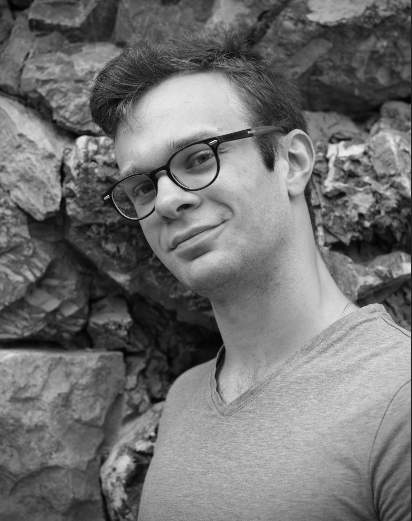Captioning the Stream: Accessibility and Inclusion in Zoom Theatre
Rainbow-hued block letters flashed across the screen to the thumping beat of electronic music. “We’re grateful to have viewers from all over Turtle Island. This feels appropriate, considering these new works were made by artists across Canada.”
Listing the many Indigenous territories inhabited by the settler artists collaborating on the series, the land acknowledgement opening the second double-bill of The Stream You Step In asked us to reflect on the technology facilitating our digital gathering.
The flashing block letters again: “What are the ways in which the technologies we’re currently using–much of which isn’t available in Indigenous communities–help to combat and amplify colonialism?”
Created by The Jubilant playwright Elena Eli Belyea, this land acknowledgement drew attention to what’s known as the digital divide, an inequity that has been magnified during the pandemic: while so many of us take for granted the internet connections that allow us to attend work, school, and social gatherings right now, many in Canada lack this access that is considered a human right by the UN. The digital divide is particularly glaring for Indigenous communities, where according to a 2017 study, only 24% of households have access to high quality internet.
“How can we use our technology to make a better world for all (not just a select few of us)?,” the parading letters wondered, giving way to the opening scene of The Jubilant and leaving the at-home audience to ponder the assertive text’s questions of equity and access.
Equity and access – the questions we keep asking during this time of remote theatre.
Equity and access – the ongoing puzzle Canadian theatre en masse has been unable to solve.
Equity and access – the issues woven through the four plays of The Stream You Step In, by virtue of their timely subject matter, but also their manner of delivery.
In Marcus Youssef’s Thank You for Your Labour, for example, Zoom enabled the white characters to organize a concert as a show of solidarity for the Black Lives Matter movement on their university campus. As the play’s performance platform, Zoom also ensured that the characters’ cringe-worthy attempts at allyship reached a wide audience through the program’s ability to overcome some of the traditional barriers to access in the theatre – commute time, inaccessible buildings, the surrender of energy to travel across town for a few hours, for instance.

This article, the last in our series about the recent co-production between Outside the March and the University of Windsor, looks at what it means to make theatre accessible on Zoom and asks what we might take from this form when we can safely gather IRL again.
Accessibility versus Inclusivity
Accessibility in digital theatre can mean many things for both the creative team and audiences: from being able to quickly and affordably connect to the performance platform to begin with, to having one’s specific needs accommodated during rehearsals and the show itself, to being able to revisit the stream later should an audience member need to step away from the performance for a few moments.
Keeping in mind the fluid and multifold definitions of accessibility, Connor Yuzwenko-Martin and Rikki Entz acted as accessibility consultants on The Stream You Step In, focusing mainly on closed captioning. For Yuzwenko-Martin, a Deaf artist, consultant, advocate, and public relations specialist, there’s an important distinction between access and inclusion: “[With] a building, for example… I can walk right in, I can access the washroom easily, I can watch whatever it is that’s being presented quite easily, I can order a drink, I am able to communicate and do those things. So I have access that way.”
Inclusion, Yuzwenko-Martin notes, begins with the recognition of his identity as a deaf-signing individual. “I’m not one of those people in the Deaf community who lip reads. And so there’s a team of people who can maybe sign or maybe they’ve brought in an interpreter or they have all those things that are ready for me fully–rather than looking at me coming in, like, ‘Oh no, there’s someone here who’s Deaf! Do we need to get a pen and paper to write? What do we need to do?’ And then I walk in and think, ‘Well, this isn’t my space. I’ve paid to attend an event, but nothing has been set up to work for me… and I don’t feel welcomed.’”
Entz agrees, adding that they do not believe in the concept of universal accessibility.
“We all deserve acceptance and what works best for us,” Entz says. “You cannot include every single person perfectly. You have to recognize that sometimes when you accommodate one person, it might exclude someone else.” For Entz, Accessibility Associate at Calgary’s Inside Out Theatre, it’s more important that theatres create spaces where individuals can be comfortable existing as themselves and articulate their personal needs.
Captioning the Stream
Captioning The Stream You Step In began with the playwrights, who made tweaks to their scripts to capture moments of aurality outside of dialogue, including music, ambient sound, and vocal intensity. In the opening scene of The Jubilant, for example, Allistair makes tiramisu as “♪ upbeat electronic jazz” is played in the background; the “sound of bowls and kitchen tools being moved around frantically” follows as he yells to his wife, Blake, in the other room: “I BOUGHT LADY FINGERS FOR THIS RECIPE AND NOW I CAN’T FIND THEM.” “WHAT THE HELL ARE LADY FINGERS?,” Blake yells back.

University of Windsor students Abbey Gagnon and Natasha Sangemino executed captioning during the run of the series, following along on Zoom and copying and pasting sections of script into the chat in sync with the performance. They received training from Yuzwenko-Martin and Entz, who also watched a dress rehearsal and performance to provide further feedback to the creative team from an audience perspective. This resulted in some tweaks in the scripts to improve closed captioning as the run progressed.
Providing this service for the digital series was less complicated than it might be for in-person theatre, where producers need the time and resources to find an interpreter in close proximity to the theatre and to purchase and set up necessary equipment. Yuzwenko-Martin and Entz are both based in Alberta, but the digital nature of this project allowed them to share their expertise with artists in Windsor. This points to yet another form of accessibility: an accessibility of labour, of knowledge-sharing unburdened by geography, and an upside of theatre’s forced migration online during the pandemic.
Accessibility of labour – of knowledge-sharing unburdened by geography.
Another by-product of the digital divide.
A Long Time Coming
Closed captioning, of course, is just one aspect of making a Zoom performance more inclusive. The medium, as Entz points out, holds much potential for disabled communities.
“Disabled people have been asking for online performances for a very, very, very long time.”
Drawing on their own experience watching The Stream You Step In, Entz notes that watching from home meant they didn’t have to worry about whether their needs would be accommodated.
“My space is already geared towards me as a disabled person. When we have to meet in the confines of an institution, in the confines of someone else’s space, it’s hard. When we’re on our own terms, that is when it’s a lot easier to navigate… I like digital theatre, because that means that I am in control of my own environment.”
While Entz acknowledges that streaming is not always accessible for everyone–again, pointing to the fallacy of universal accessibility–they stress that the disabled community has played a pivotal role in advocating for and developing digital forms of performance since long before the pandemic. Now that services like captioning can be provided more easily and at lower costs, Entz and Yuzwenko-Martin see them being more readily adopted by theatre companies, though they warn that there are limits to profit-driven technologies like Zoom.
The disabled community has played a pivotal role in advocating for and developing digital forms of performance since long before the pandemic.
A Zoom update recently deleted a feature that Yuzwenko-Martin relied on, reminding him of the risks of these kinds of platforms.
“If you rent a theatre and you rent the stage for two weeks, that’s your theatre for that period of time and you can change whatever it is that’s needed: you could put in the lights, maybe adjust it with a ramp. You have control over that space. With Zoom, you don’t have that luxury. We can’t make changes to the platform.”
Both artists hope that the lessons learned about accessibility by the theatre community during the pandemic won’t be forgotten when audiences can gather in-person again. Yuzwenko-Martin sees the potential for companies to offer live streamed performances to increase access for individuals homebound for health or disability reasons or for those living in remote communities outside of urban theatre centres. He believes that this should be a minimum standard moving forward, adding that businesses like Zoom should consult with disability advocacy groups to seek advice on app updates.
And yet, both Entz and Yuzwenko-Martin are part of the “select few”–to return to Belyea’s land acknowledgement–whose access to technology facilitates their access to theatre at the moment. Entz emphasizes theatres’ need to centre “kindness, compassion, understanding” when welcoming audiences back. And they’re right – that’s crucial – but it’s more than that. As theatres consider how to incorporate digital technologies in a post-pandemic world, some potential audiences will remain shut out due to the digital divide unless that empathy is extended in a truly inclusive–not just accessible–way.










Comments